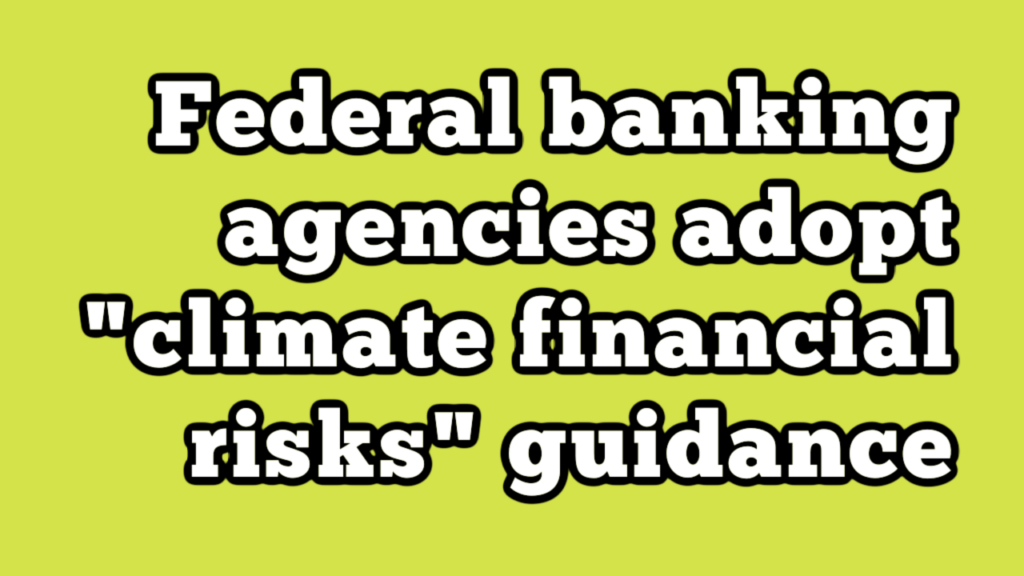Federal banking agencies adopt “climate financial risks” guidance

Here’s the intro from this Morrison & Foerster memo:
On October 24, 2023, the Federal Reserve Board (FRB), the Federal Deposit Insurance Corporation, and the Office of the Comptroller of the Currency (together, the “Agencies”) released their final Principles for Climate-Related Financial Risk Management for Large Financial Institutions (the “Climate Principles”). The Agencies stated that the Climate Principles are “intended to explain and supplement existing risk management standards and guidance on the roles of the boards of directors and management.”
The Climate Principles apply to U.S. banking organizations with over $100 billion in total consolidated assets. The Climate Principles also apply to (i) foreign banking organizations (FBOs) with combined U.S. operations of greater than $100 billion in total consolidated assets, and (ii) any U.S. branch or agency of an FBO that individually has total assets greater than $100 billion. Even though only large banking organizations are in the scope of the Climate Principles, the Agencies acknowledged that banking organizations of all sizes may be exposed to climate-related financial risks. Therefore, smaller institutions may want to review their climate risk management program against the Climate Principles, especially given the potential “trickle down” supervisory expectations.
The high-level framework set out in the Climate Principles is intended to assist banking organizations in managing climate-related financial risks (i.e., physical risk and transition risk).[1] The Climate Principles discuss the following six areas: (i) governance; (ii) policies, procedures, and limits; (iii) strategic planning; (iv) risk management; (v) data, risk measurement, and reporting; and (vii) scenario analysis. The Climate Principles also cover a range of specific risk areas (e.g., credit, liquidity, interest rate, operational, legal and compliance, and certain types of nonfinancial risk).
